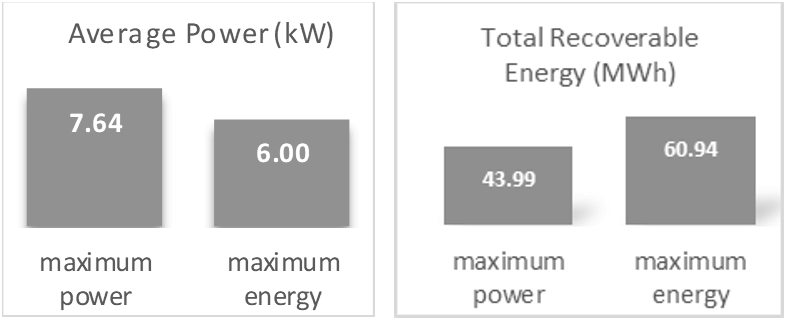LIBRARY
Reliable Maximum Energy Damping Selection Strategy for Wave Energy Power Converters

It is necessary to develop a control algorithm for power converters to reduce the damage from thermal cycles and produce more energy. Fig. 2 shows the damping selection strategy to maximize the energy over different wave conditions. The annual wave control profile is then selected based on the map in Fig. 2 for maximum power and maximum energy strategy for each wave condition. Energy and power over certain wave conditions is weighted based on its possibility over the course of a year, which sums up as the average power. Total recoverable energy is derived from the energy of each irregular wave condition over the period Tirr, multiplied by the total numbers for each condition, and adding up all the products. The final results for each selection strategy are shown in Fig. 3. With the maximum power strategy for damping selection, the average power over a year is higher than with a maximum energy strategy; in fact, the total recoverable energy is 38.5% higher when selecting damping with a maximum energy strategy.
























































































